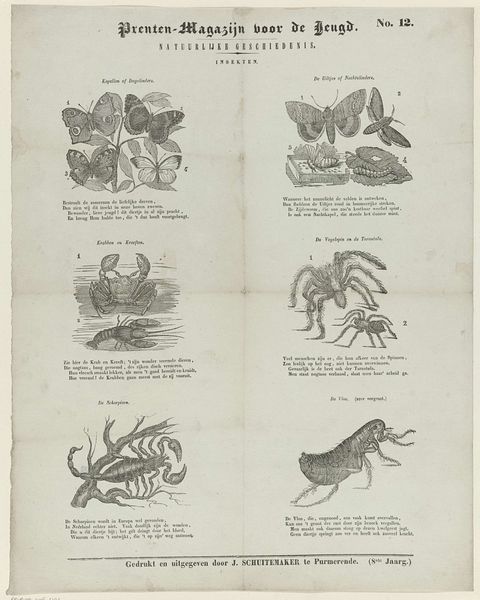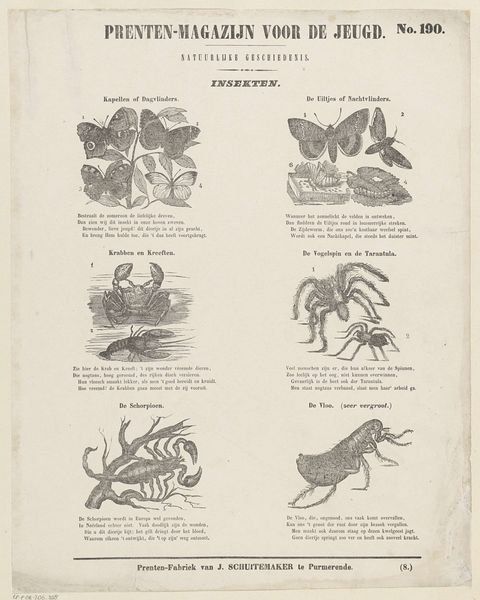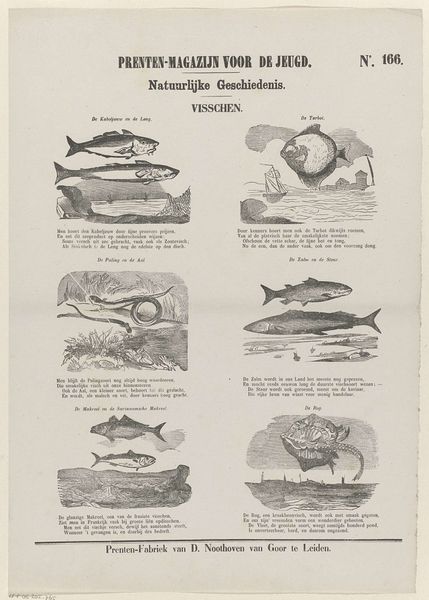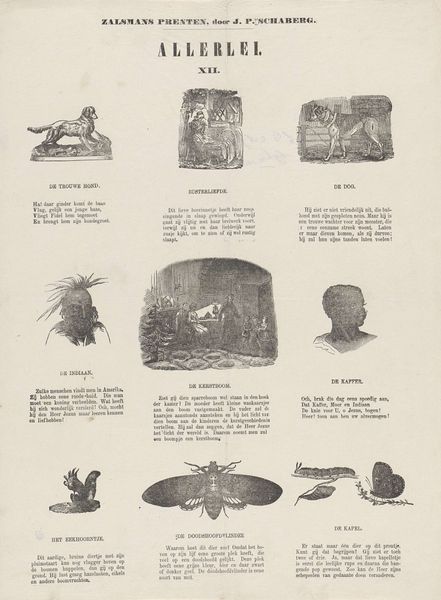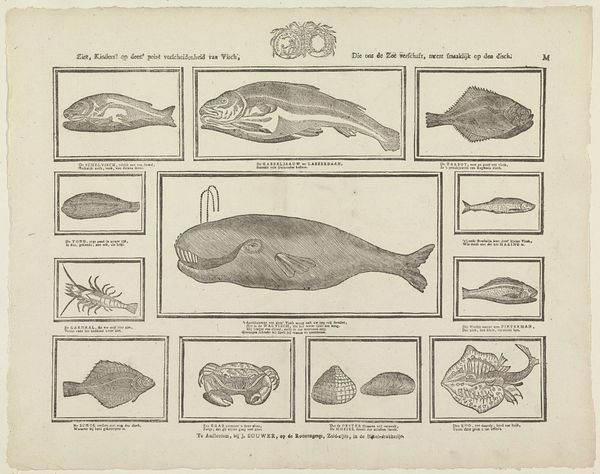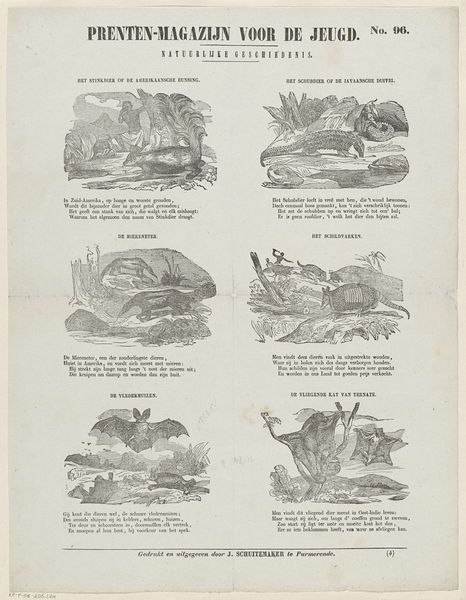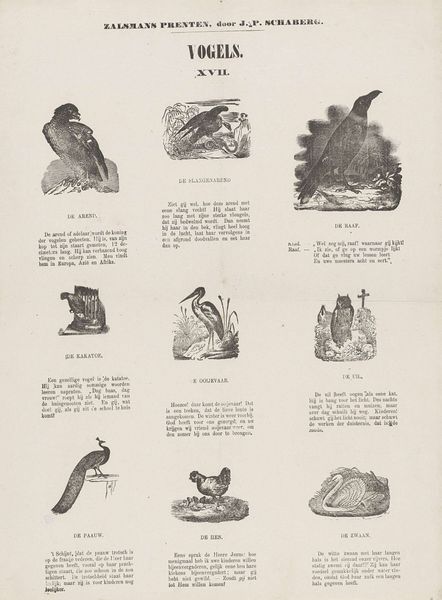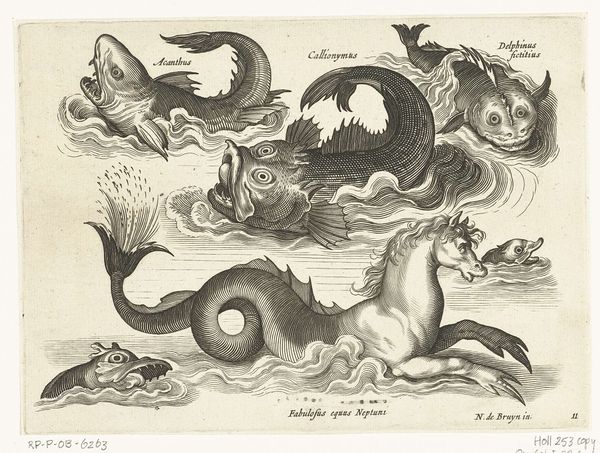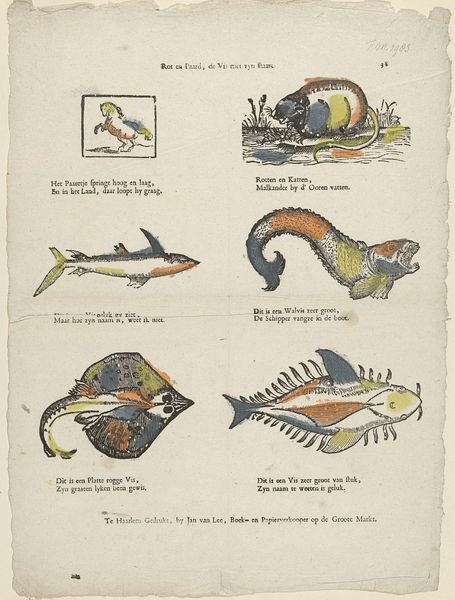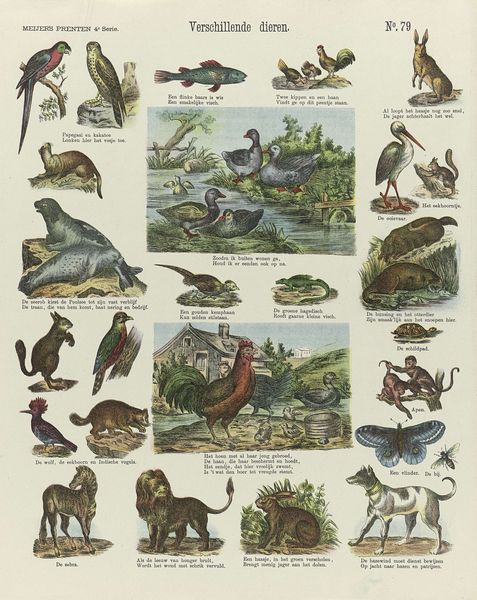
print, engraving
#
animal
# print
#
old engraving style
#
genre-painting
#
engraving
#
realism
Dimensions: height 425 mm, width 340 mm
Copyright: Rijks Museum: Open Domain
Editor: This print, titled "Land- en waterdieren" or "Land and Water Animals," dating back to sometime between 1869 and 1882 by Gerhardus Philippus Zalsman, features a collection of engravings. It reminds me a bit of old textbooks or biological diagrams. What do you see when you look at this work? Curator: From a materialist perspective, this engraving prompts questions about its production. Engravings, unlike painting, are intrinsically linked to the printing press. What was the access to printing technology in 19th-century Netherlands, and who controlled it? How was it distributed to become something people could engage with and learn from? Editor: That’s a good point! It wasn't just creating the images, but replicating them en masse. Was this a luxury item or something aimed at wider public consumption? Curator: Exactly. Consider the paper: is it cheap wood pulp or something finer? Its qualities speak volumes. Cheaper materials signal a broader audience and a shift in how knowledge was being disseminated at the time. We could analyze wear and tear, discoloration. Was this bound? How does this condition affect the reading experience? How did viewers interact with this material? Editor: It's fascinating to think about it less as a piece of art and more as an artifact of knowledge production and distribution. Something mass produced. Curator: Precisely. Each impression from the engraving plate could carry variable material, printing and ownership-based signs, depending on handling. Editor: Thinking about this as a historical object showing mass production definitely broadens my understanding of prints beyond their artistic value! Curator: And it connects the imagery to the socio-economic context of its time, opening up further areas for exploration.
Comments
No comments
Be the first to comment and join the conversation on the ultimate creative platform.
